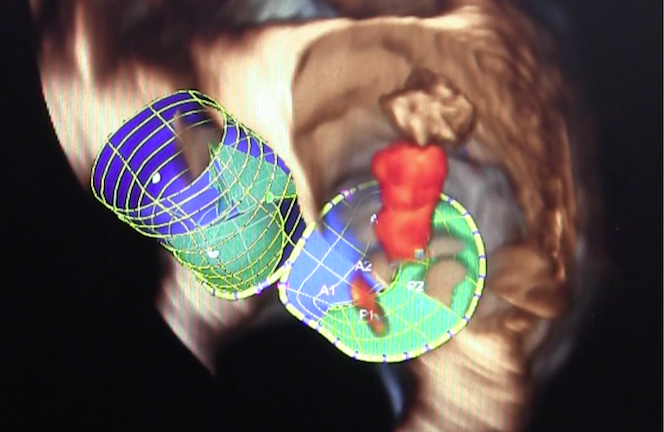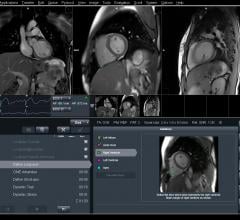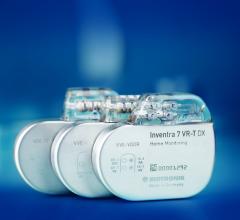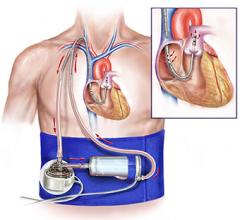
Several futuristic technologies and their potential impact on healthcare were discussed during the Future of Cardiovascular Medicine track sessions at the American College of Cardiology (ACC) 2015 annual meeting. Among these were use of big data, the integration of smartphones and wearable devices into patient care, robots in the cath lab, 3-D printing and how technology will help lower the cost of clinical trials for drugs and devices and speed their introduction to market.

The Medicines Company announced that the U.S. Food and Drug Administration (FDA) Cardiovascular and Renal Drugs Advisory Committee (CRDAC) voted 9 - 2 with one abstention to recommend approval of the investigational intravenous antiplatelet agent cangrelor as an adjunct to percutaneous coronary intervention (PCI). Cangrelor is indicated for reducing the risk of periprocedural thrombotic events such as myocardial infarction (MI), stent thrombosis (ST) and ischemia-driven revascularization.
The American College of Radiology (ACR) and American Association of Physicists in Medicine (AAPM) are offering a new resource document for physicians and medical physicists serving as radiation safety officers at medical facilities. The ACR-AAPM Radiation Safety Officer Resources was developed jointly by medical physicists from both associations.
Providing exceptional cardiovascular care for patients to achieve the best possible outcomes is the number one goal for ...
Researchers from Johns Hopkins performing sophisticated motion studies of heart magnetic resonance imaging (MRI) scans have found that specific altered function in the left atrium may signal stroke risk in those with atrial fibrillation and those without it.
Infraredx Inc. announced the enrollment of 1,000 patients in the Lipid-Rich Plaque (LRP) Study. The LRP Study is a prospective, multi-center clinical trial designed to identify a correlation between lipid-rich plaques detected by Infraredx’s TVC Imaging System and the occurrence of a cardiac event within two years.
Biotronik announced that the U.S. Food and Drug Administration (FDA) has approved its DX line of implantable cardioverter defibrillators (ICDs) that can deliver ultra-high energy on the first shock. Also included in the approval response from the FDA is the latest generation of defibrillator devices for patients with complex heart rhythm conditions.
Cardiac positron emission tomography (PET) is growing in popularity among cardiologists because it provides the ability ...
CardiacAssist Inc. announced that it received a Class 3 CE-mark for its Protek Duo veno-venous cannula. The Protek Duo is licensed for use as a single cannula for both venous drainage and reinfusion of blood via an internal jugular vein during extracorporeal life support procedures. It has already been deployed at more than 50 hospitals in the United States since its initial launch in late 2014.
Scientific confirmation has just been published in the American Journal of Cardiovascular Disease that atherosclerosis, the underlying process of heart attacks and strokes, is generally not caused by high cholesterol blood levels. It is rather the result of a structural weakness of the blood vessel walls caused by chronic deficiency of ascorbate (vitamin C).
A new clinical trial is testing the feasibility and efficiency of a doctor in New York City remotely performing long-distance, tele-robotic ultrasound exams over the Internet on patients in Chicago.
When performing radiofrequency (RF) ablation to treat cardiac arrhythmia, medical professionals must balance the safety ...

Minneapolis Heart Institute Foundation (MHIF) physicians are conducting a research study using the first transcatheter mitral valve replacement in the United States at Minneapolis Heart Institute at Abbott Northwestern Hospital.
Cardiovascular Systems Inc. announced that it has received U.S. Food and Drug Administration (FDA) clearance for the 4 French, 1.25 Solid Diamondback 360 Peripheral Orbital Atherectomy System (OAS) for the treatment of peripheral artery disease (PAD). Specifically, the clearance covers the company’s 145-cm-long 1.25mm Diamondback 360 Solid Crown, 4 Fr sheath compatible and the Modified 1.25mm Diamondback 360 Micro Crown, 4 Fr sheath compatible.
DAIC/ITN Editor Dave Fornell shows examples of new healthcare IT technology at the 2015 HIMSS meeting that will change ...
Change Healthcare Cardiology Hemodynamics is an integrated hemodynamic monitoring system for monitoring vital signs and ...
Philips introduced CareSage at HIMSS 2015, which is new predictive analytics engine that enables health systems to better monitor and care for elderly patients by combining actionable insights with wearable devices and monitoring. CareSage provides analysis of real-time and historical data from health care providers and Philips Lifeline, to proactively identify patients most likely to have health issues so clinicians can intervene before problems occur, helping patients stay healthier and reduce avoidable hospitalizations.
HD Medical Inc. demonstrated the new ViScope visual stethoscope product family at at HIMSS 15. These visual stethoscopes provide dynamic auscultation — the ability to see what you hear. ViScope’s integrated visual display shows heart waveforms in real-time, allowing for patient screening, teaching and telemedicine.
The Centers for Medicare and Medicaid (CMS) has issue a draft list Stage 3 Meaningful Use requirements. Jeff Coughlin ...

 April 29, 2015
April 29, 2015













